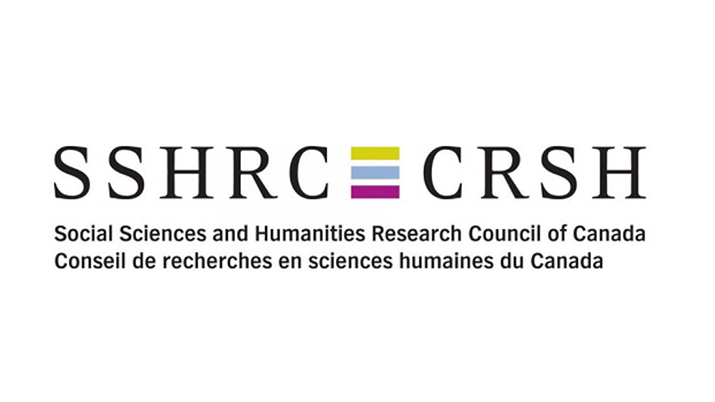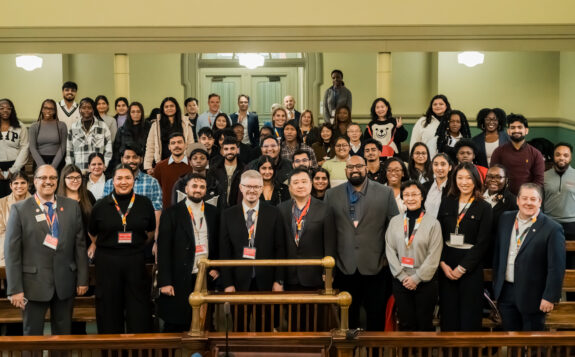(SAULT STE. MARIE, ON- July 20, 2021): The Social Sciences and Humanities Council (SSHRC) has awarded funding in the amount of $387,805 to support the research efforts of two members of the Algoma University faculty. SSHRC is the federal research funding agency that promotes and supports research and research training in the humanities and social sciences. Through its Talent, Insight and Connection programs, and through partnerships and collaborations, SSHRC strategically supports world-leading initiatives that reflect a commitment to ensuring a better future for Canada and the world.
Dr. Vivian Jiménez-Estrada has been awarded $199,870 in Partnership Development funding for her international research project leading a network of Indigenous and ally researchers, activists and scholars who support Indigenous women’s demands and centre their right to self-determination in research that affects them.
Dr. Nirosha Murugan has been awarded $187,935 from New Frontier Research Fund (NFRF) for her innovative research to develop a novel, early diagnostic tool for cognitive impairments associated with cancer treatments.
According to Dr. Donna Rogers, Algoma University Vice-President Academic and Research, “These awards highlight the success of cutting-edge research being conducted by Algoma faculty, and we are very pleased to see their work supported by national research council funding. Dr. Jiménez-Estrada’s SSHRC project brings together international partners to advance Indigenous-led research into violence prevention and healing. Dr. Murugan’s NFRF funding brings diverse disciplines together in pursuit of breakthrough ideas and high-reward outcomes.”
To learn more about the exciting and innovative research taking place at Algoma University, visit the institution’s Research and Innovation website.
Expanded information on researchers receiving funding:
Dr. Jiménez-Estrada – Indigenous Women Storying and Interweaving their Experiences of Gendered and Colonial Violence in Mexico and Canada:
Building on a previous SSHRC Partnership Engage Grant in 2018, Dr. Jiménez-Estrada’s new project advances the grassroots work on violence prevention and healing of two Indigenous women’s collectives – the National Coordinator of Indigenous Women in Mexico and the Indigenous Women’s Anti-Violence Task Force in Baawaating (Sault Ste. Marie, Ontario) Canada. The project is unique as it departs from Indigenous and decolonizing methodologies where allies play a supporting role in the documentation of the types of systemic and everyday violence that Indigenous women in Canada and Mexico experience, while shifting how and why this data is collected. The key to this process is building capacity in both regions to protect the stories gathered and making them central to fostering Indigenous communities’ social, spiritual, economic and political conditions as they see fit.
“Indigenous communities across the Americas, especially women and 2Spirit people, still hold the knowledge to heal and address gendered and colonial violence that is not always taken into account,” shared Dr. Jiménez-Estrada, Associate Professor in the Department of Sociology,
Academic Lead–Equity, Diversity and Inclusion, and NORDIK Institute Research Associate. “This project aims to unveil the sacred stories of resiliency and strength to address the different dimensions of violence and ways in which they deviate from original instructions of taking care of each other, the land and future generations. In the end, it advocates for those who have gone missing and provides a forum to co-create knowledge and strategies to protect the sacred today in areas in need or more attention: the North Shore region in Canada and the Indigenous communities in Mexico plagued by lack of infrastructure, basic human rights violations and lack of respect for Indigenous rights”.
Dr. Nirosha Murugan – Enhancing Brain Health After Cancer Therapy: Countering Chemo Brain using Novel, Early Detection Tools:
Dr. Nirosha Murugan is leading an interdisciplinary research project funded by the New Frontiers in Research Fund (NFRF), which supports high-risk, high-reward research in pursuit of breakthrough ideas that impact all Canadians. She and her team of international scholars, which includes Dr. Ioannis Voutsadakis, a Sault Area Hospital oncologist, will develop a novel diagnostic imaging strategy for early detection of cognitive impairment (CI) or “chemo brain” – one of the major brain-based side effects of anti-cancer treatments, including chemotherapy. Patients with chemo-brain suffer confusion, memory lapses, and attention deficits that often go undetected until a reversal of symptoms become highly challenging. Dr. Murugan will address this problem by simultaneously measuring electrical brain networks and “biophotons,” which are light emissions by the brain that can be detected using cutting-edge biophysical instruments.
“Without predictive and early-detection diagnostic tools, clinicians cannot anticipate which patients are most at risk of developing chemo brain, thus delaying the administration of adjuvant therapies to mitigate CI,” shared Dr. Murugan, Assistant Professor of Health Sciences (Department of Biology). “To date, it is unclear why certain patients experience cancer therapy-related CI and which factors determine their severity. In recent years, fMRI has been used to identify resting brain networks that are predictive of cognitive outcomes following cancer therapy. The most predictive brain regions are superficial and therefore accessible to newer, more powerful technologies, which invites exciting possibilities for novel diagnostic strategies.”
Because electrical brain networks (electomes) have been used previously to diagnose neuropsychiatric disorders, they can now be applied to chemo brain. However, the more intriguing possibility involves early detection of chemo brain using brain-based light emissions that are associated with molecular mechanisms of cell stress and toxicity following anti-cancer therapies. To combat cancer, clinicians use drugs to disrupt cancer cell function which results in the production of cell stress molecules that are known to also release low-level light, known as biophotons. Therefore, measurements of biophotons may represent the earliest possible non-invasive diagnostic imaging strategy. Dr. Murugan’s ultimate goal is to create a cost-effective and highly predictive biophysical diagnostic tool that can be implemented in all clinical settings to increase quality of life in cancer survivors in Canada and internationally.
Share Article




